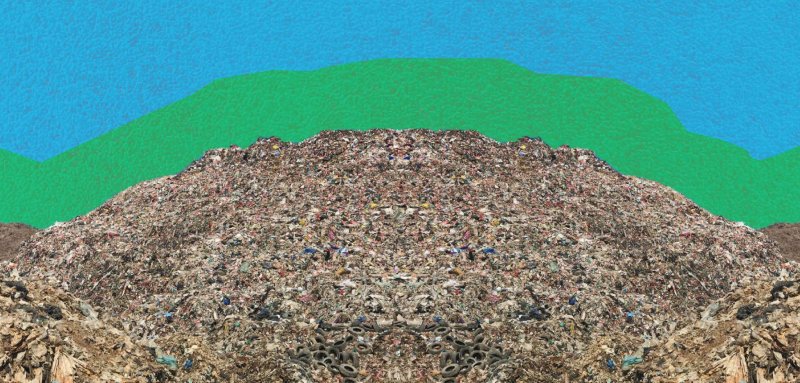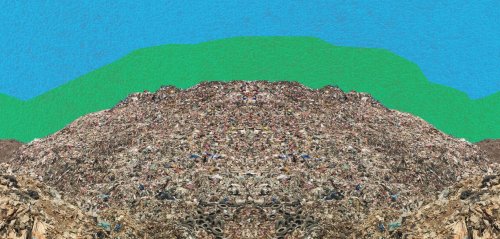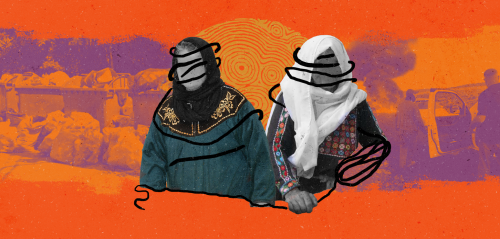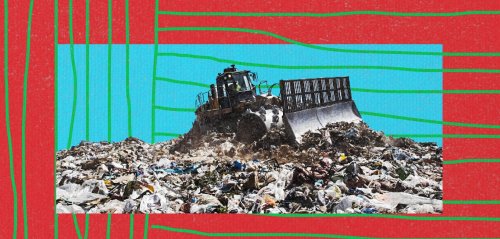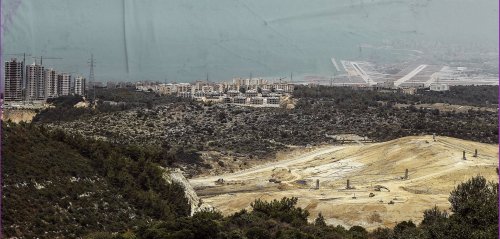The residents of the Yemeni capital can find no refuge from the dangers of waste, not because of the proximity of where it’s dumped, but because it is returning to them in another form. Since the city’s waste is thrown into a large dump north of Sana'a without any sorting and treatment, it produces a leachate (contaminated liquid mixture of toxic substances) which has many risks amid a lack of any plans to recycle or convert waste into energy.
To clarify, leachate is the liquid leaking from accumulated and decomposed organic waste, and the fusion of food residues mainly leaking from household trash bags. It is formed in the places where waste is dumped or buried for treatment. Household waste, including food waste, constitutes 65% of the total waste in Yemen.
The residents of the Yemeni capital can find no refuge from the dangers of waste, not because of where it’s dumped, but because it is returning to them in another form
In what can be described as a health and environmental disaster, the al-Azraqain landfill, north of Sana'a, constitutes a mountain of waste that reaches a height of about 90 meters, and accommodates 1,800 tons of waste from Sana'a and Amran governorates on a daily basis, including hazardous waste like pesticides, batteries, car oils, and industrial and medical waste, without any sorting or treatment. This leads to the occurrence of chemical reactions resulting from a highly toxic mixture, the risk of which increases with weather fluctuations and the high percentage of waste and its accumulation before being buried.
To make matters worse, scavengers dig up garbage bags in search of metal and plastic cans, as a source of income, by selling them to dozens of recycling plants, factories and traders who export them as scrap materials. In addition, some sanitation workers collect waste and then burn it in garbage barrels to save fuel under the pretext of the high prices of oil and petrol, in addition to the problem of shepherds feeding their livestock from garbage barrels due to the dwindling areas for grazing in the cities.
All this is coupled with the poor quality of the garbage bags, and some residents not closing them well before the cleaning truck comes to take them to the garbage dump, which spreads decomposing leachate on the sidewalks next to garbage containers, and spoils the soil surrounding trees on the streets, parts of which turn into small garbage dumps.
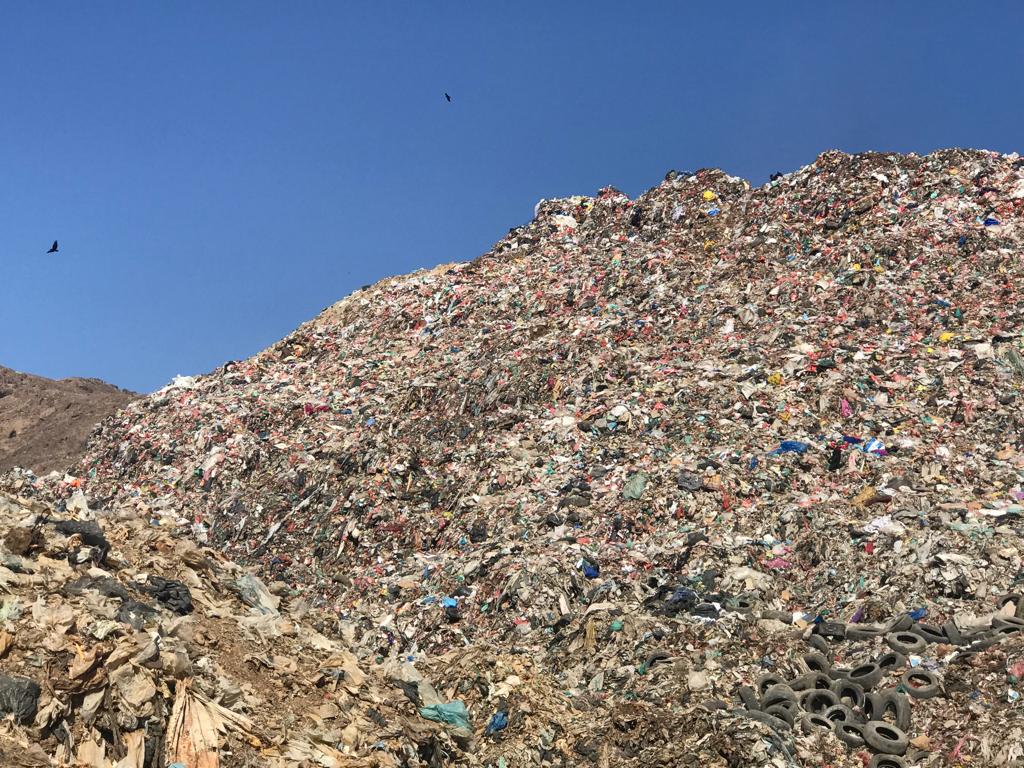
The amount of waste generation
According to a 2015 study conducted by the United Nations Development Programme (UNDP) assessing the state of waste in Yemen, a person generates about half a kilogram of waste in urban areas, and less than that in rural areas (between 0.3 and 0.4 kilograms), and waste collection rates are 65 percent in cities and 5 percent in villages.
The waste consists of organic waste (65%), and plastic (10%), while the rest is paper, cardboard, metal, glass, among other things. Among the substances and materials included in the waste, damaged and expired food is the source of the instant leachate that leaks from each bag of household waste.
The good thing is that there are intentions that have not yet been realized to put garbage barrels dedicated for food waste, to prevent toxic liquid leakage in the roads and the build-up of putrid odors, which result in epidemics that are easily transmitted with the presence of mice, cats and dogs, and thus the spread of diseases resulting from environmental pollution, as infection spreads in areas overflowing with waste and sewage. Officials in sanitation services themselves talk about the dangerous health effects of dealing with waste and the task of managing and treating it, which requires cooperation on a wider scale as a government priority.
In a serious health and environmental disaster, Sanaa's al-Azraqain landfill constitutes a mountain of waste over 90 meters high, and takes in 1,800 tons of waste on a daily basis, including many types of hazardous waste, without any sorting or treatment
The hardships of sanitation workers
Waste residues are also a major tragedy for sanitation workers. In this regard, the head of the Municipalities and Housing Workers’ Union, Mohammad al-Marzouqi, tells Raseef22, "The workers inside the al-Azraqain dump are exposed to all kinds of diseases, so much so that one of them recently had to stay under observation in the hospital for four months. The cost of his treatment amounted to 18 million Yemeni riyals ($ 32,000), which was deducted from the health insurance amount allocated for workers and employees of the union and sanitation fund, before he passed away a few days ago, while another employee was infected when he was exposed to dog poison for the same reasons.”
However, al-Marzouqi, who is the adviser to the mayor of the capital on the city’s sanitation affairs, admits the lack of prevention tools and health supplies, as well as the lack of safety measures due to the lack of financial resources and allocations meant for treating critical cases. There are those who have developed heart, liver and kidney cancer because there is no incinerator for solid waste such as empty cans. Even the health insurance was created through personal efforts and is only available for sanitation workers in the capital Sana'a.
He continues, "There is no government support for this problem, and it has turned into a financial burden, from workers who suffer from an injury to their spine as a result of physical exertion while lifting the trash or sitting for long periods of time like garbage truck drivers, to workers who cut trees, water them and spray them with pesticides, which causes them to contract various diseases.”
This situation led to workers demanding that their conditions be addressed, which can be summarized in 10 points that mainly focus on providing health supplies and requirements and occupational safety tools for all workers.
The Yemeni individual generates about half a kilogram of waste in urban areas, and less than that in rural areas (between 0.3 and 0.4 kilograms)
Waste and environmental pollution
When asked about the danger of not sorting organic and inorganic waste – as well as the dangers of burning or burying it – on air, soil and water, environmental specialist Dr. Youssef al-Makhrafi states, "Countries have unanimously agreed on the safe disposal of waste in order to achieve the goals of the 2030 Agenda for Sustainable Development, through the R3 mechanism, which refers to the reuse and recycling of all types of waste because it is dangerous and is a source of pollution, and poses a danger to the soil and people's health.”
He adds, "The world's waste treatment mechanisms went through stages before recycling could be done. This created an awareness of the dangers of landfilling waste that reach the groundwater, rainwater streams, the soil and the air. The city of Sana'a produces about 2,000 tons of waste that is buried in a dump that is considered the worst way to handle waste, as a result of institutional and societal ignorance of health and environmental risks.
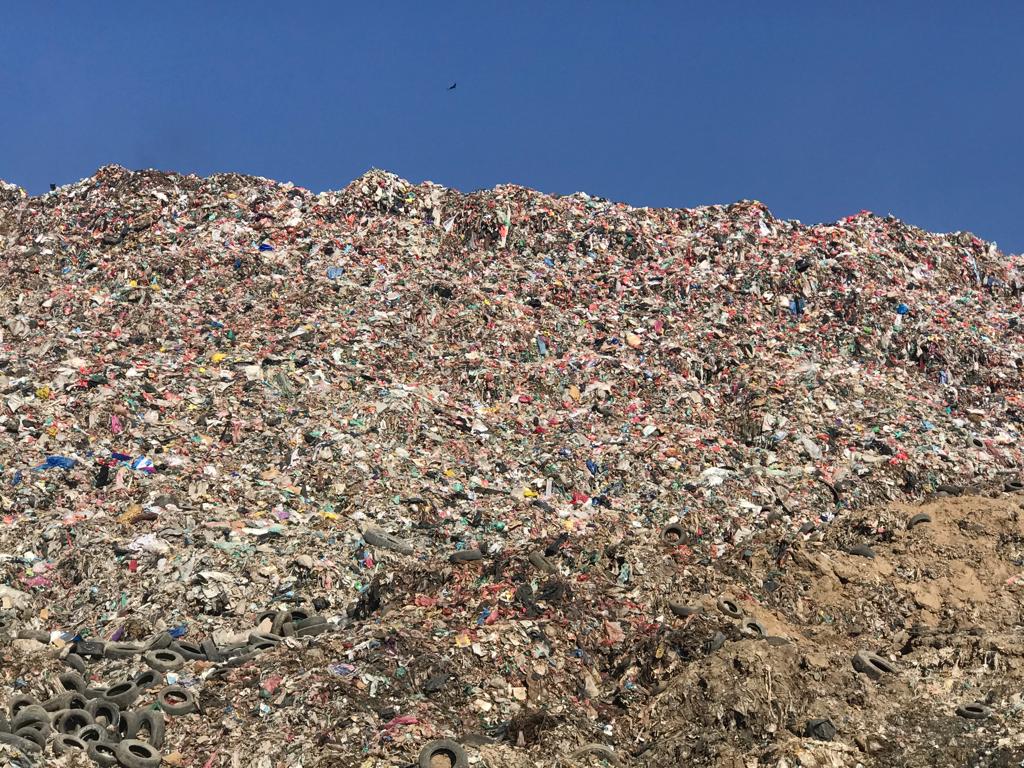
Ibrahim al-Sarabi, director general of The Hygiene Project in Sana'a, confirms the magnitude of the pollution, speaking in particular about medical waste, "Unfortunately, we do not have equipment to transport or treat hazardous medical materials from their locations in hospitals, clinics and medical centers. Rather, they are collected alongside organic waste, which causes serious harm to workers when this type of waste is taken from its place to the al-Azraqain landfill, especially since there is no waste sorting except by hand."
"We had a strategic project for hazardous medical waste with the support of the capital municipality and the Social Fund in 2015, and we were about to start using the equipment designated for that but then it was bombed," he adds.
Treating organic waste
Dealing with waste before leachate leaks from it, and therefore its impact on the environment and human beings, is not a difficult matter. Also, this type of waste residue can be used and utilized on several levels, such as converting it into gas or generating electricity from it, which happened in an agricultural area in Lahij Governorate in southern Yemen, as part of a project supervised by the United Nations Development Programme with local and international partners, which is the first plant to convert household and agricultural waste into gas to generate electricity.
The treatment plant consists of two parts. One is for the treatment of organic waste, i.e. animal and agricultural waste, and is used in energy production, and produces "ash" when treating animal waste that results in fertilizer used in agriculture, while the treatment of agricultural waste produces ash used in coal production. The second part is for recycling plastic waste and producing plastic granules as a raw material. There are points of sale to buy waste from citizens, which is transported via solar-powered tuk-tuk vehicles to the plant site.
Dealing with waste and its impact on the environment and human beings isn't difficult. It can be used on many levels, like converting it to energy, which happened in southern Yemen as part of a project to convert waste into gas to generate electricity
Mohammed Salam, a specialist in renewable energy in the program, tells Raseef22, "After we were able to produce energy, we also plan to employ anaerobic fermentation technology to process food residues and turn them into organic fertilizer. If the waste remains in their place with the surrounding weather conditions, it produces leachate that pollutes the air with methane emissions, seeps into clean water, and destroys agricultural land.”
It remains to say that Yemen's issue with waste is a major problem related to the safety of the environment and people's lives; an issue that requires a change in awareness, along with entrusting the task of waste disposal to specialists, providing them with tools and mechanisms for sorting, treatment and personal protection, as well as the public understanding that cleanliness and preserving the environment requires more than mere complaints, grievances, and the aspirations to do so.
Raseef22 is a not for profit entity. Our focus is on quality journalism. Every contribution to the NasRaseef membership goes directly towards journalism production. We stand independent, not accepting corporate sponsorships, sponsored content or political funding.
Support our mission to keep Raseef22 available to all readers by clicking here!
Interested in writing with us? Check our pitch process here!
